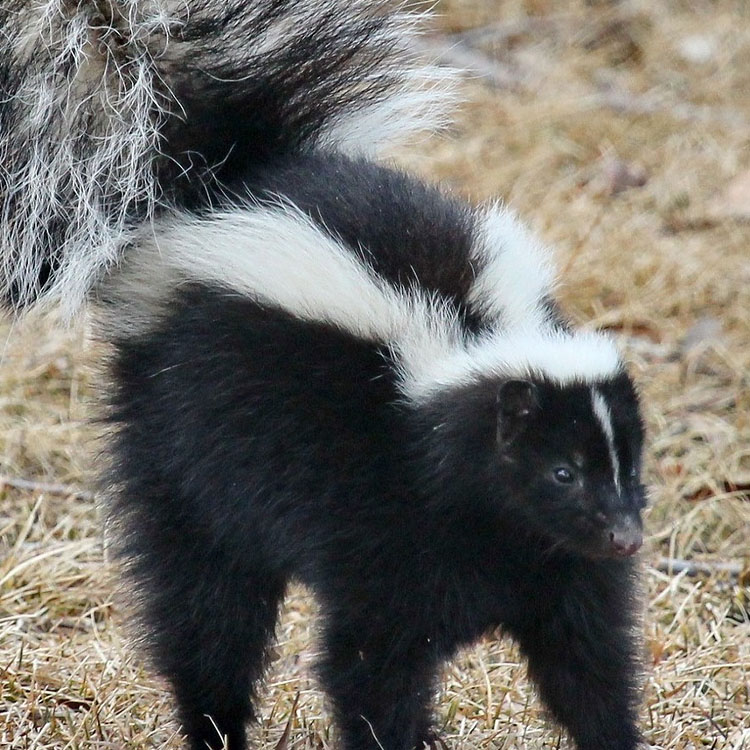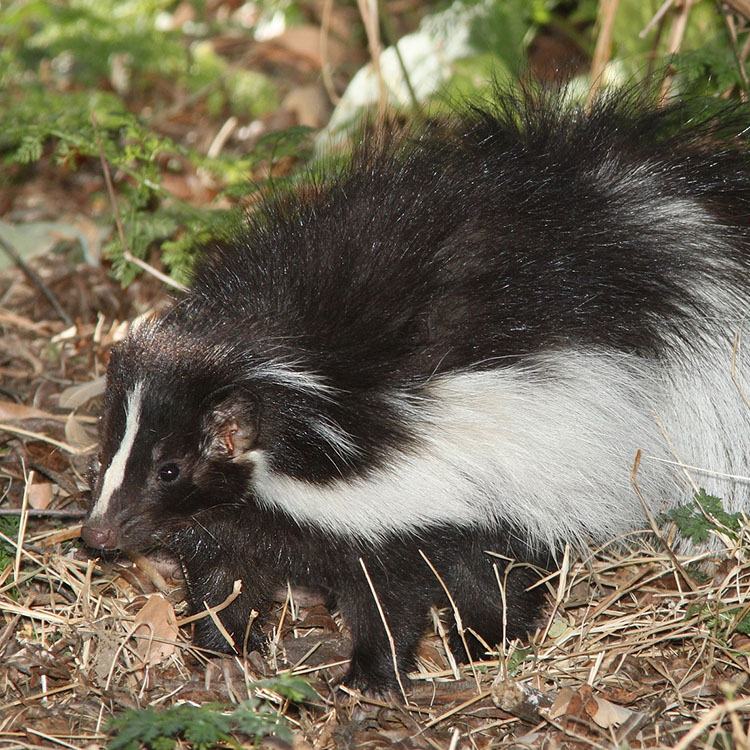Skunk Trapping Tips
Skunks and other nuisance wildlife can be controlled by live trapping and removal or lethal trapping in some cities. In order to do this properly you should know how to use a trap safely and effectively, and avoid being sprayed by the skunk at all costs. Often, lethal traps are used on these creatures to prevent the trapper from being sprayed after they've caught the skunk.

Live Skunk Traps
Medium-sized animal traps with the proper bait can trap a skunk alive and keep it contained until you are able to remove it. You run the risk of being sprayed with these traps, as we mentioned above. Sometimes a trapper will use a live trap and then exterminate the skunk with a friearm, but this is discouraged for reasons we explain in our skunk killing and skunk exterminating articles.
Lethal Skunk Trapping
Kill traps for skunks are usually what we call body grip traps and sever the animal's spinal cords at the base of the skull, effectively and humanely killing the skunk in one motion. It is not wise to be in close proximity in case the skunk is able to spray before it is completely deceased. Skunks often void their bowels while being exterminated, so be prepared to clean up skunk feces in this area as well. It is easier to clean skunk feces and skunk spray from grass than concrete or pavers, so set your traps in the yard.

Trapping Alternatives
There are several alternatives to trapping, and a few are more effective than others. Excluding skunks from your property and eliminating food sources is the most humane method and will prevent this nuisance wildlife from returning to your property. Skunks find food in tall grasses, underneath sheds, porches, and decks, and in loose tree trimmings. Remove the trimmings and high grass, and place mesh steel screening around the edges of structures that are elevated. This will keep skunks from making a home underneath your property.
